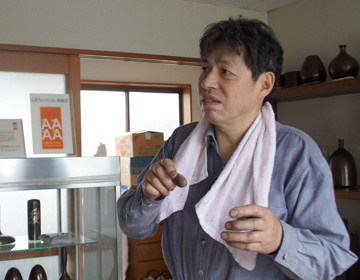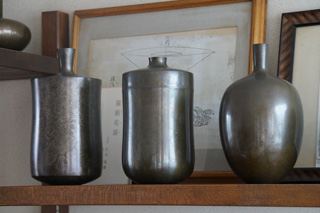 |
Works that change the atmosphereThere are certain pieces of work that brings a kind of tension in the air. Works by Istuo Shoji whom we interviewed was like that. |
Creating the expression of metalWhat heightened the value of the design was the surface or “skin” of the vase. Cast metal needs to have a mold, which determines its overall shape. At the same time, processes like polishing define cast metal work. Shoji’s flat vase expressed the texture of the ”rogin” material well, with an exquisite balance. |
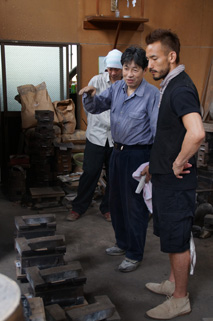 |
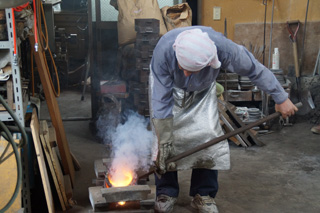 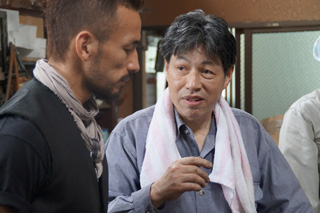 |
Using fire and alloyAfter we were done talking, he showed us how he melts metal and makes the castings. First Shoji brought a bronze bar. It even looked like a piece of wood at first, but when he set it on the floor, it made a metallic sound that made us realize what it was made of . It was heavy, but this time he was going to make a lid for a metal kettle, so he was working with a relatively small amount of bronze, but if he was going to make anything larger, the amount of bronze needed would be substantial. He then placed the bronze into the burning flame that was making a big noise as the flame burned. When it was all molten, the metal was taken out of the flame. “This is the hard part. He smiled as he worked. “Even if you feel hot, or even if you get a burn, you can’t spill this. We were wondering how he could smile in this situation. The timing when the metal is taken out of the fire changes according to the alloys and the mold. That timing makes a big difference to the outcome of the work, so it is really where the craftsman’s experience and instincts count. After being removed from the heat, the metal is set in the mold and cooled. The metal is smoking even when in the mold, and it is easy to tell how hot it was. When the metal cooled down, we could see how it was molded cleanly into a lid. It was then finished by polishing. |
ACCESS
- ”Cast metal crafts Sanoya”
- Yamagata, Yamagata Prefecture
 Discovering Japan [Nihon] through authentic craftsmanship [Honmono]
Discovering Japan [Nihon] through authentic craftsmanship [Honmono]